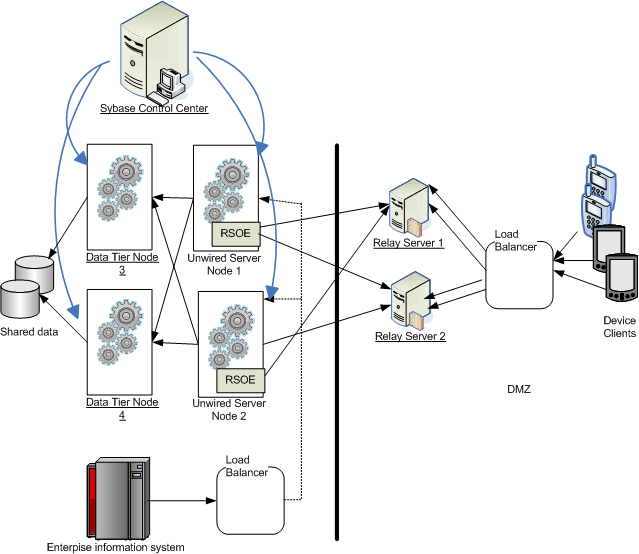The optimally redundant cluster is reliable, multi-node cluster and requires a larger hardware investment because of the number of nodes involved. An optimally redundant cluster is the Sybase-recommended solution for larger user environments.
An optimally redundant cluster includes at least four nodes, with seven nodes being optimal:
- Two Unwired Server nodes that form the application management tier. Each node includes a Unified Agent and a relay server outbound enabler (RSOE). In the illustration, node 1 acts as the primary Unwired Server in the cluster and node 2 acts as the secondary node. Both nodes are active.
- (Optional) One Afaria node that forms the device management tier. This node includes an RSOE. In the illustration, node 1 acts as the primary Unwired Server in the cluster and node 2 acts as the secondary node. Both nodes are active.
- (Optional) A load balancer for EIS data change notification requests.
- Two data tiers for Unwired Platform databases (consolidated and messaging databases) to create a redundant data tier over two nodes. Data is shared among them with a disk cluster or RAID array.
- A load balancer with two relay server nodes.
